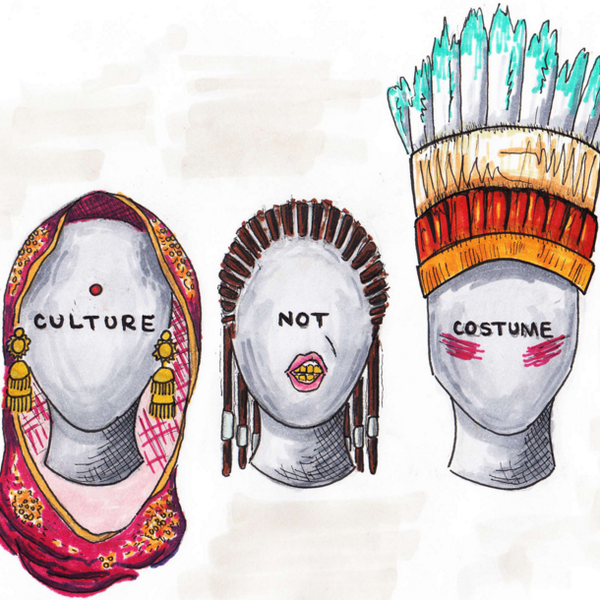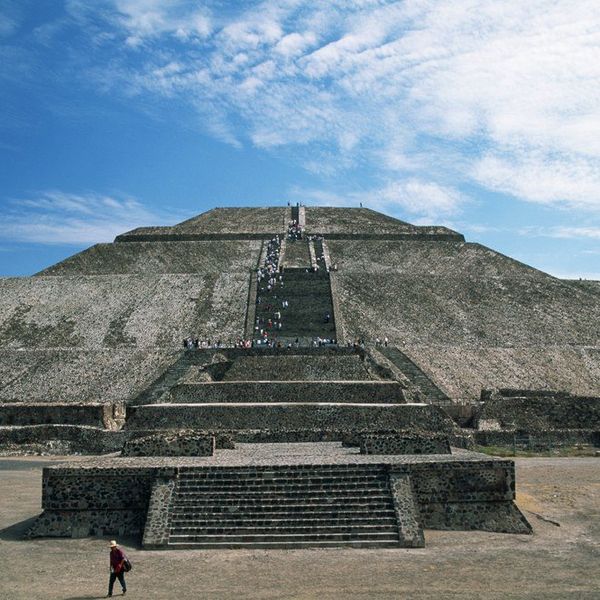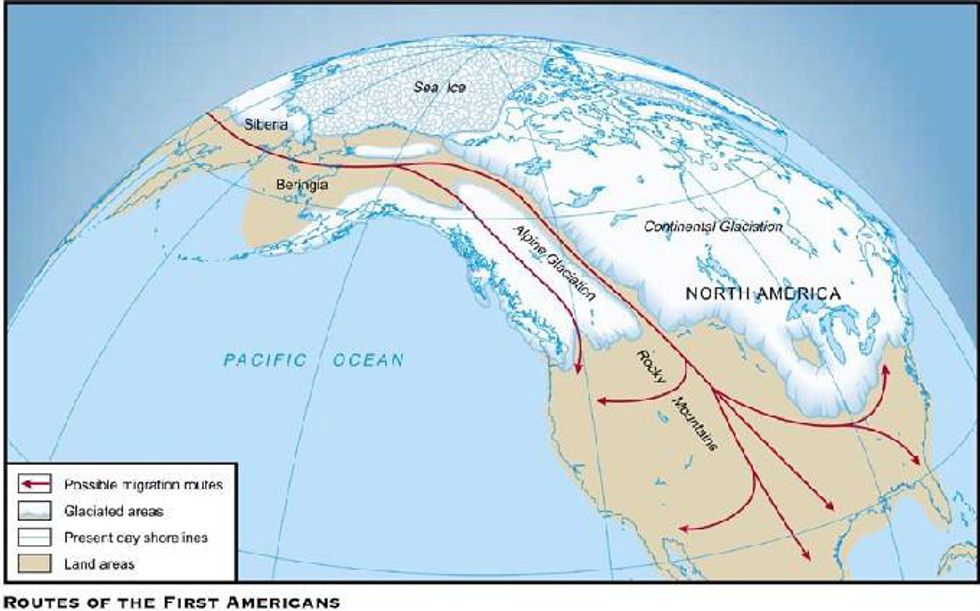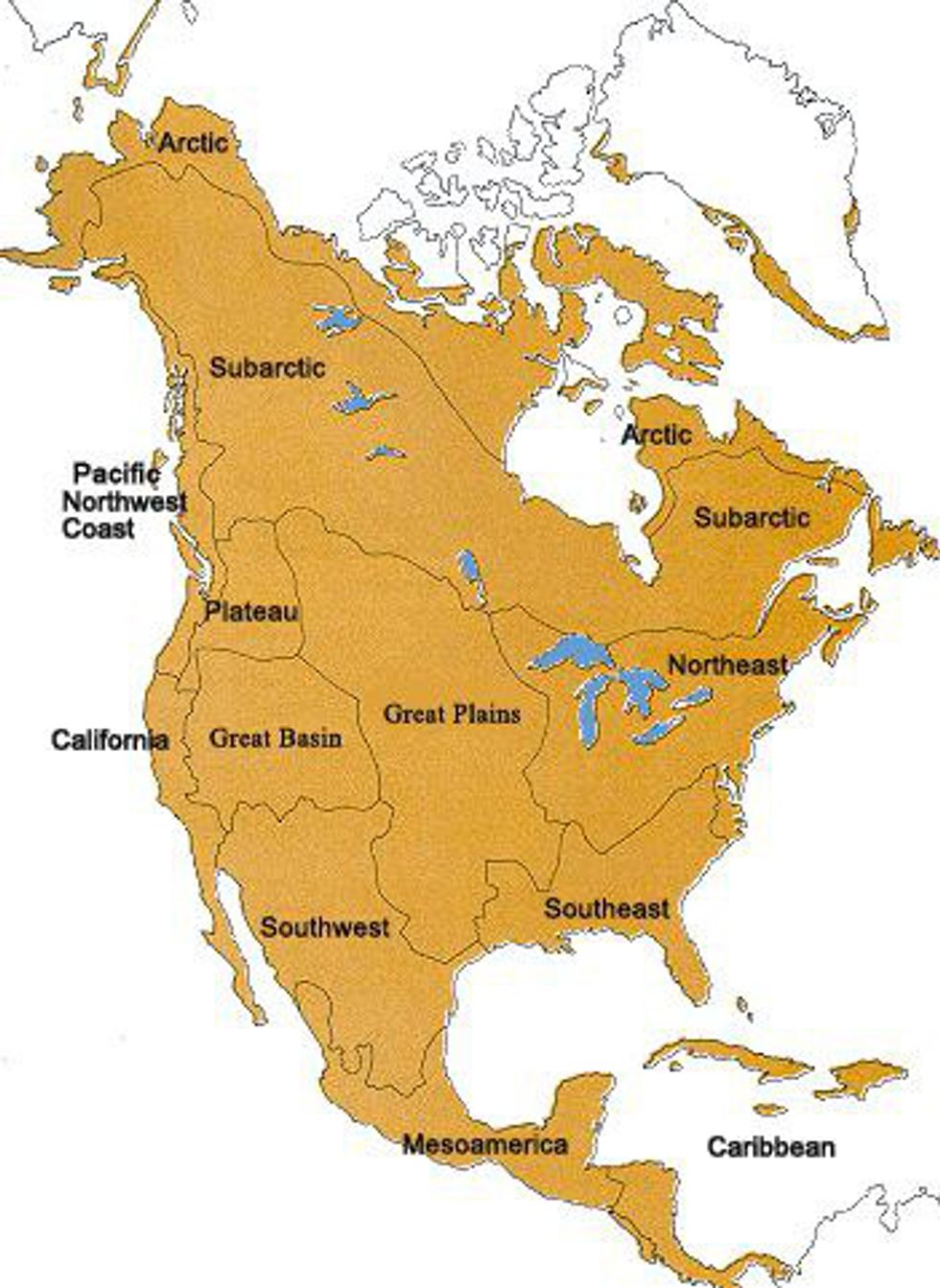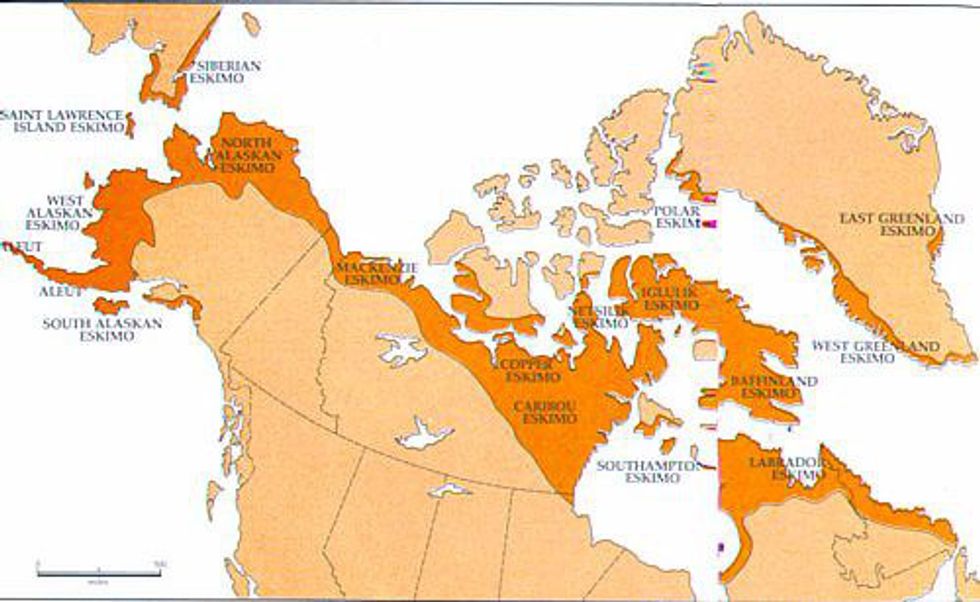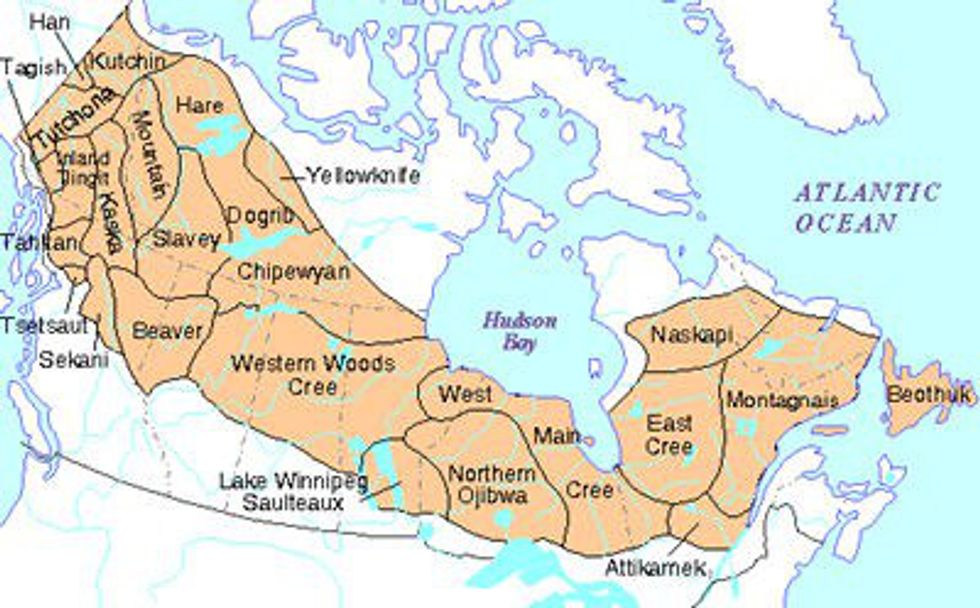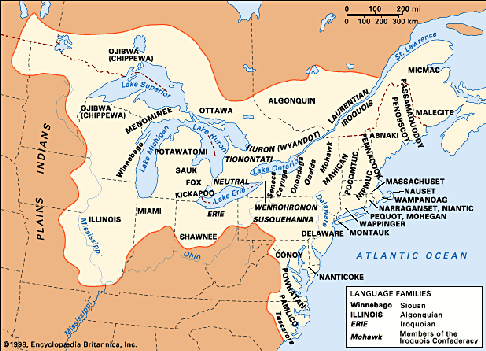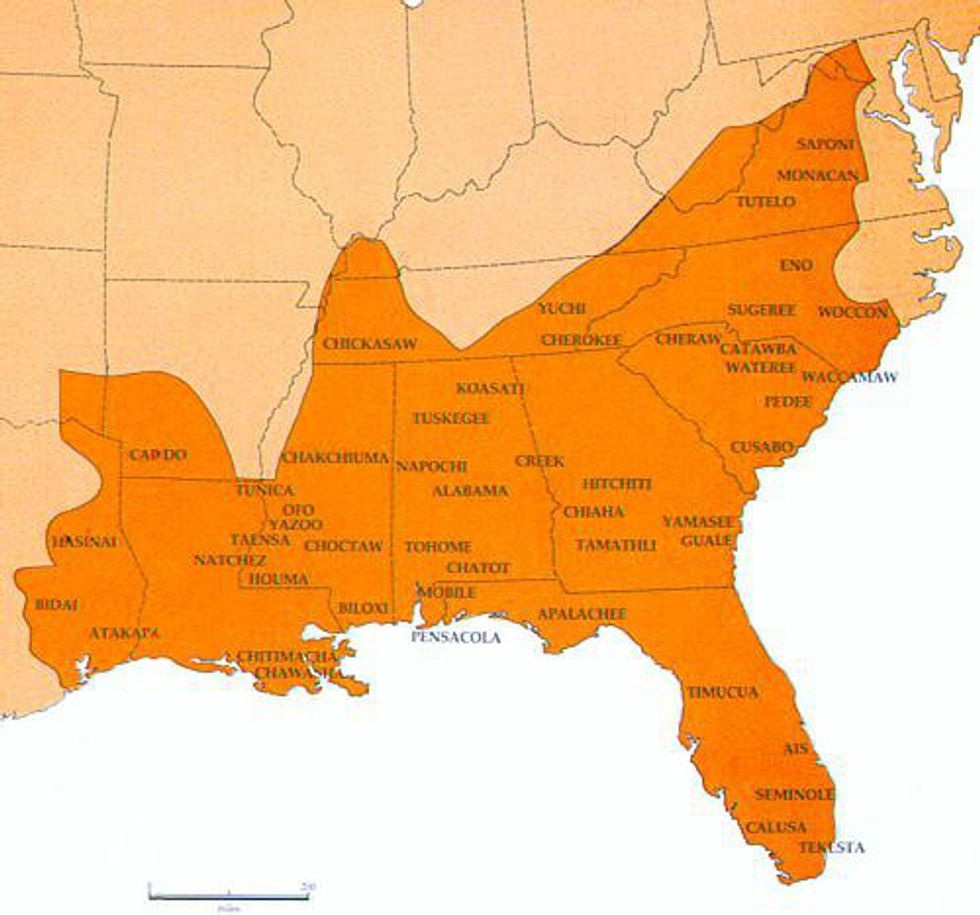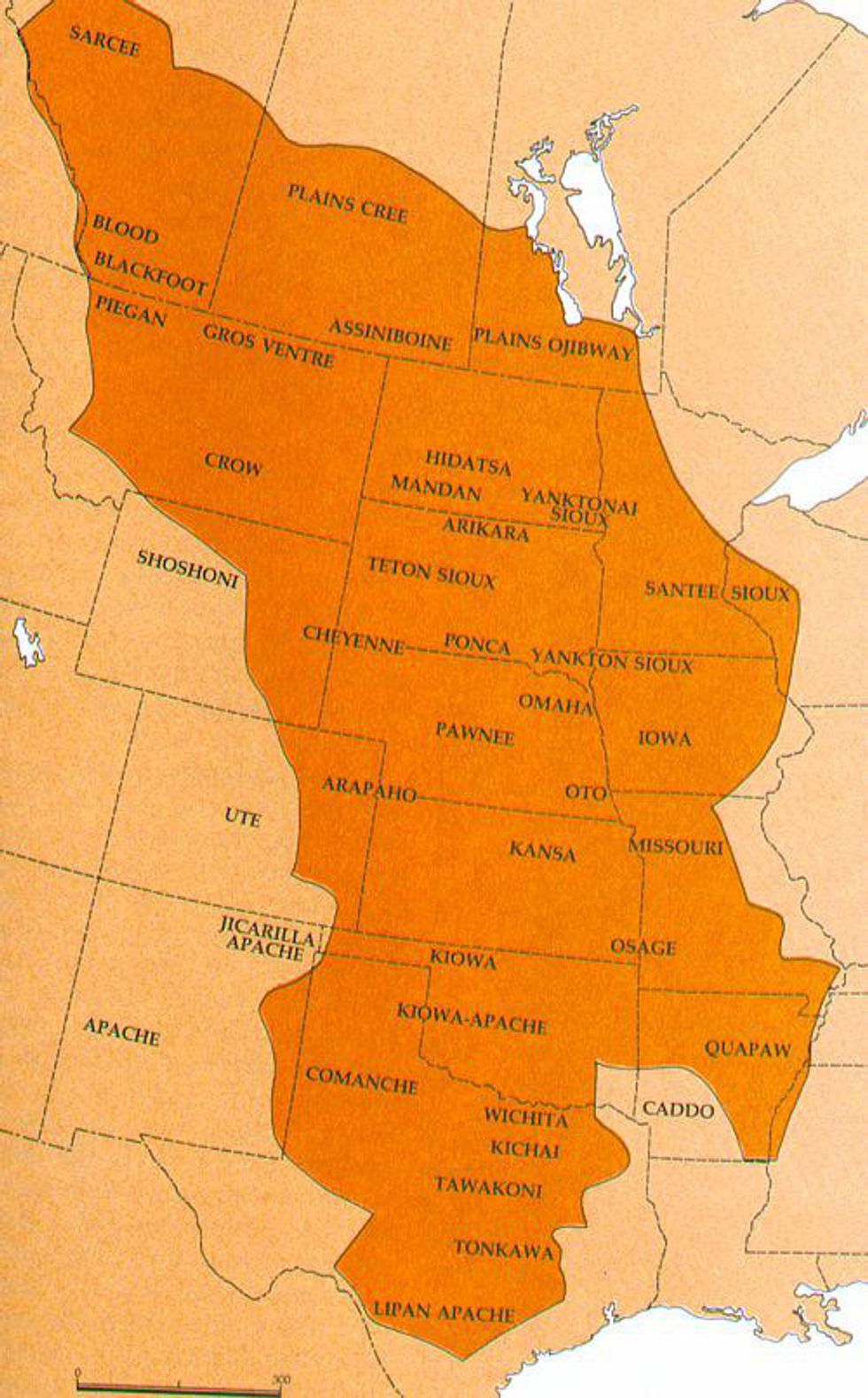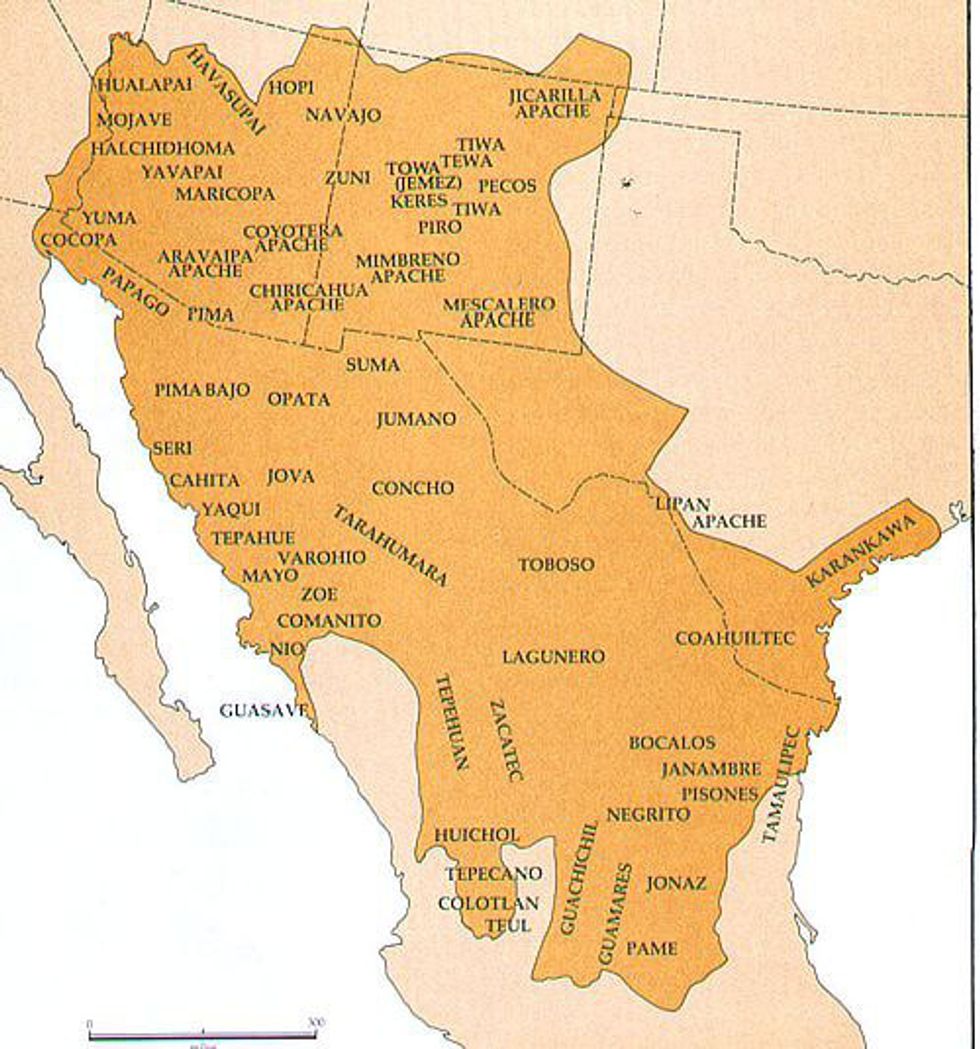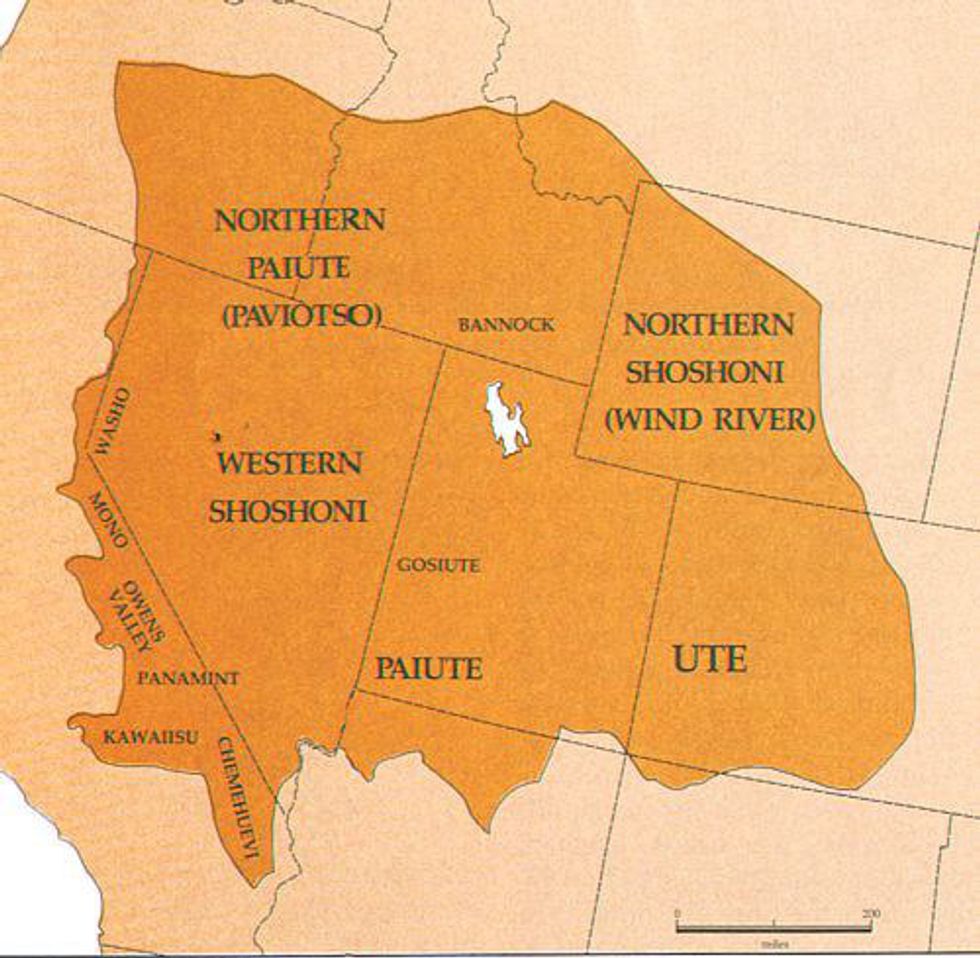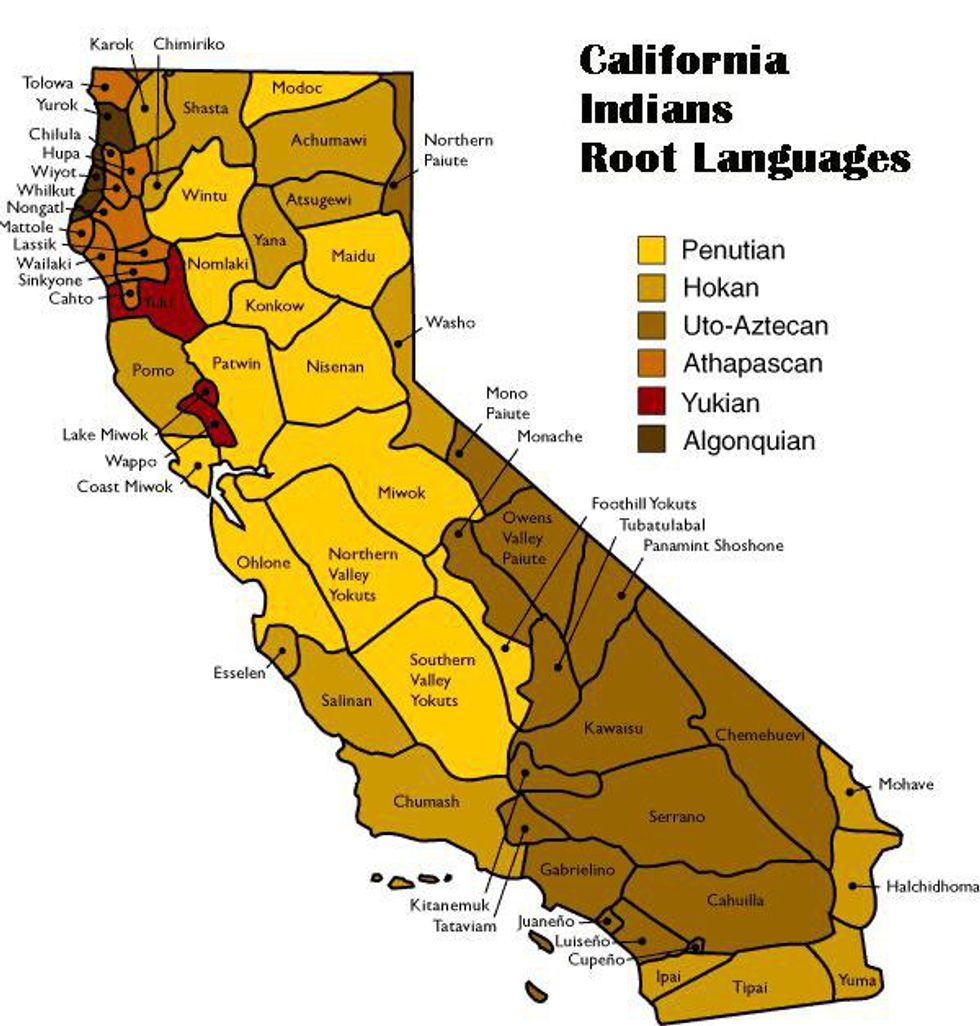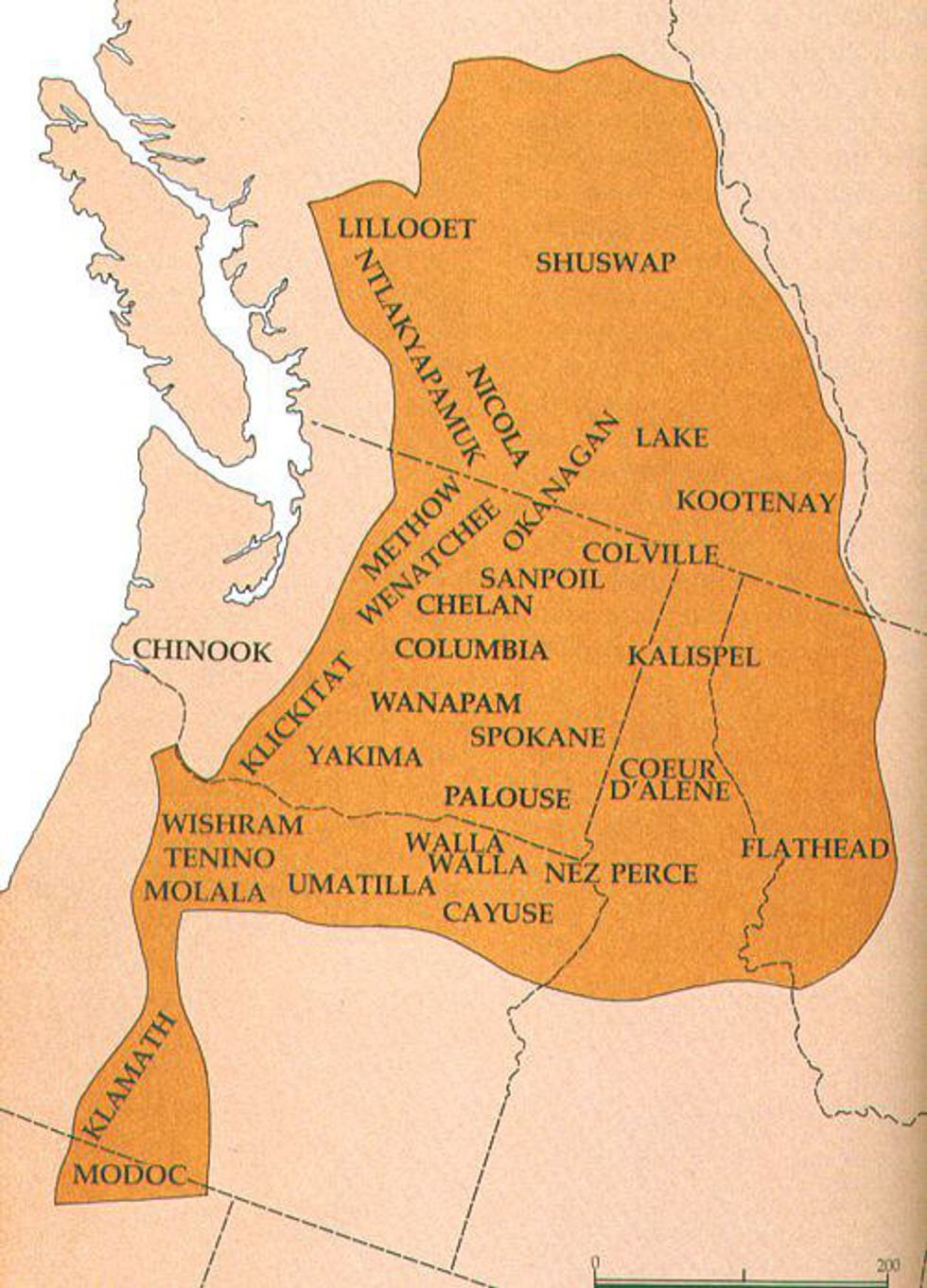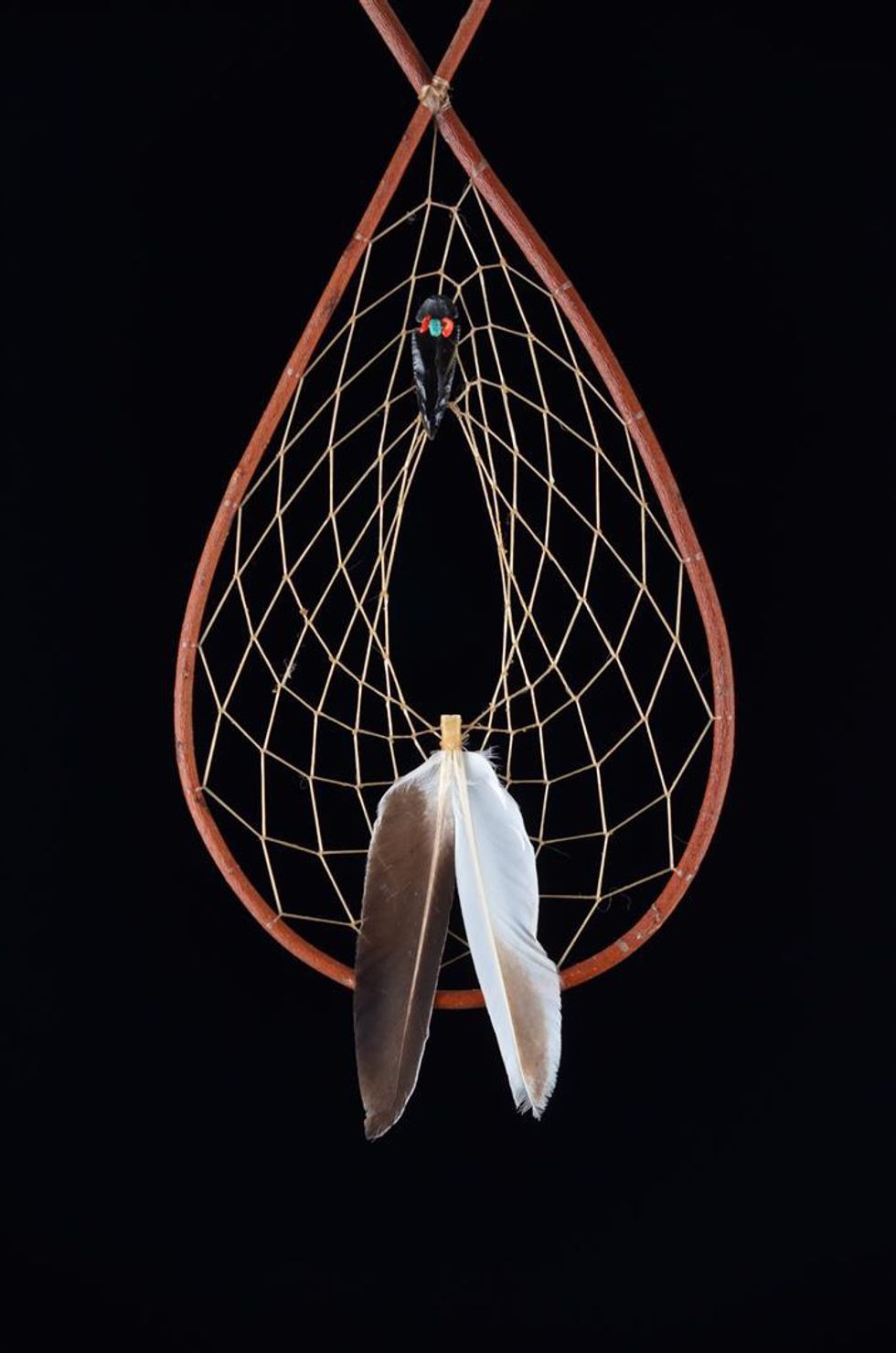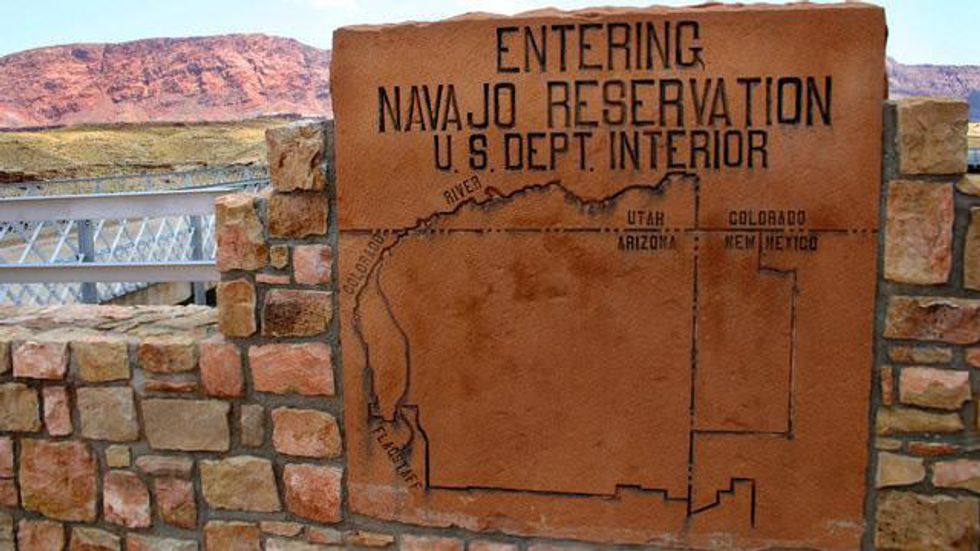It wasn't until my recent American literature class that I realized how little I had learned in school about the native people that occupied the Americas before colonization. We began by reading Native American stories, learning about the different types, the tradition of passing down stories orally and eventually read stories about the colonization of America — but from the colonist's point of view.
I had learned about the first Thanksgiving as a child and finally about the brutality the natives suffered at the Europeans' hands, briefly, in high school. Much of what I learned about their culture came from both Girl Scouts and Boy Scouts, various documentaries and museum exhibitions. But what did I actually know? What do we, as a collective nation, really know about the people that inhabited this land before the rest of the world forcibly took it from them?
In recent decades, there have been many people with these same questions. In 1972, Montana added portions to its constitution pledging to preserve the heritage of the native Americans. For about 30 years, it seemed to be all talk, until the Indian Education for All Act. It states that every student should "be encouraged to learn about the distinct and unique heritage of American Indians in a culturally responsive manner." The act was finally implemented in 2005 and some other states have started to follow in Montana's footsteps, such as South Dakota and Wisconsin, two states rich with native American history.
This raises three very important questions: what would American educators incorporate into the curriculum, how would this be done tactfully and why is this even important?
What would we teach?
As a teacher-to-be who strongly believes in the value of common core, which ensures that students in California and Texas learn the same fundamentals as students in Illinois and North Carolina, it's important that fundamental building blocks are set in place. What exactly should we be teaching about native American culture and heritage?
First, courses would focus on the history behind how the native peoples of the Americas arrived. According to scholars (and the History Channel), the ancestors of America's natives traveled here on what they call a "land bridge" from Asia to what is now known as Alaska nearly 12,000 years ago. They have estimated nearly 50 million people already lived in the Americas by the time European settlers came to the new world.
There has been discussion and controversy for years on who actually discovered the new world, and there's plenty of evidence to suggest the Chinese, the Vikings and of course, the natives. This needs to become part of the conversation in U.S history on the colonization of America, as a lot of evidence suggests that Christopher Columbus wasn't the first, second or even third person to discover the Americas.
Looking at the tribes that were here at the time of colonization, anthropologists and geographers have divided the native people's tribes into 10 separate areas based on similar habits and characteristics. This would be another important thing to note in discussing the colonization of America: appreciating the different indigenous peoples and understanding their differences and similarities.
The second important subject to integrate into American classrooms would be the discussion on the types of people who lived here far longer than the settlers who came here from Europe. In discussions of colonization, there is little said about the natives, other than who fought who and what tribes were peaceful. What about the history and cultures of these people that inhabited America?
The Geographical Regions and Tribal Differences
1. The arctic and subarctic regions
Considered to be Alaska, Canada and Greenland, the arctic was inhabited by the Inuit and Aleut. The arctic was scarcely populated, and many of the Inuit people were nomads, while the Aleut people were more settled. Many of them lived in dome-shaped houses made of sod or timber, even igloos of ice and quinzees made of snow farther up north. They used seal and otter skins as waterproof clothing and founded mushing and the use of sled dogs.
In the subarctic, inland Alaska and Canada, there were more piney forests and waterlogged tundra. At the western end were the Athabaskan speakers (Tsattine, Gwich'in and Ingalik) and at the eastern end were the Algonquian speakers (Cree, Ojibwa and Naskapi). Toboggans and snowshoes were popular means of transportation and many stayed with their families hunting Caribou.
The popularity of fur trading in the 17th and 18th centuries was fitting for their hunting and herding skills and introduced them to the world of fur trading. There are still skits put on at the Northern Tier Boy Scout High Adventure Base on the Minnesota/Canada border by the staff; it educates scouts about the natives of Canada and Minnesota, as well as the history of fur trading in the area.
2. The North East region
This region stretches from Canada to North Carolina and inland to the Mississippi River Valley. It was the region that had the most contact with the original settlers of America. There were two main groups, based on the languages they spoke. There were the Iroqouian speakers (Cayuga, Oneida, Erie, Onondaga, Seneca, Tuscarora) and the Algonquian speakers (Pequot, Fox, Shawnee, Wampanoag, Delaware, Menominee). There were also the Miami, the Algonuian, and the Illinois tribes.
The Iroquois lived in larger, more stable villages, while the Algonquians lived in smaller fishing or farming villages. The Iroquois tended to have more warriors, which got them into conflict more frequently than the Algonquians, and the two tribes were often forced to be pitted against each other when one preferred to fight the colonists and the other make peace. The more well know Powhatan tribe also resided in this region, home to the princess Pocahontas.
3. The South East region
This region stretched from the southern end of the North East region down to the Gulf of Mexico. The more well-known indigenous peoples of the South East region included the Cherokee, Chickasaw, Choctaw, Creek and Seminole, who all spoke variations of the Muskogean language.
By the time of the American Revolution, many of these tribes had been lost to disease and displacement. The rest were forced out on what (I hope) we all learned in school was called the Trail of Tears. Nearly 100,000 natives were forcibly removed from their homes.
4. The Plains region
This area stretched from the Mississippi River to the Rocky Mountains and from Canada to the Gulf of Mexico, one of the largest, if not the largest, region. The people were mainly farmers and hunters until the introduction of horses in the 18th century, when many of them became nomadic herders.
The peoples who lived here included the Crow, Blackfeet, Cheyenne, Comanche and Arapaho peoples. Many spoke Siouan, Alonquian, Uto-Aztecan and Athabaskan languages. The stereotypes of the teepee and feathered war bonnets came from the people of the Plains. Many of these people were forced onto reservations when white settlers brought disease and guns and eventually wiped out most of the Plains' bison.
5. The South West region
This region was made up of what we know today as New Mexico, Arizona, Colorado, Utah, Texas and Mexico. The Hopi, Zuni, Yaqui and Yuma lived in permanent pueblos made of stone or adobe. The Navajo and Apache, however, were more nomadic.
They established houses known as hogans which were made of mud and bark. By the time these territories became part of the United States, most of the indigenous people had already been wiped out. Many remaining natives were relocated onto reservations.
6. The Great Basin region
The Great Basin sits between the Rocky Mountains on the east side, the Sierra Nevadas to the west, the Columbia Plateau to the north and the Colorado Plateau to the south. Many of the native people spoke Shosonean or Uto-Aztecian dialects. They foraged for food and hunted small mammals, living in wikiups made of saplings and brush.
After American settlers moved into their land and were introduced to horses, they often formed hunting and raiding bands, which we have most commonly associated with natives from old "wild west" films. They were forced out of their land and onto reservations after the discovery of gold and silver in the west. Many lost their land and their lives.
7. California region
This region is estimated to have had the highest population of any region. It was said to have over 100 different tribes that spoke over 200 dialects. They included the Penutian, Maidu, Miwok, Yokut, Hokan, Chumash, Salinas and Shastas.
They all lived fairly similar lifestyles which emphasized hunting instead of farming. They were generally peaceful and focused a lot on family and community relationships. When Spanish explorers settled in the 16th century, many of the natives were forced into labor or assimilation, and many died of diseases introduced by the settlers.
8. The North West Coast region
This region stretched from British Columbia to northern California. It had a plethora of natural resources, including salmon, whales and shellfish. They built large villages that could hold hundreds of people. There was a strict social structure where people that were close to the chief were considered to be the upper class.
This could also be measured in the number of possessions a person had. This was the exact opposite of the tribes on the East coast who didn't believe in the value of material possessions. Some of the peoples who lived here included the Haida, Tlingit, Chinook, Tsimshian, Coos, Nootka and Salish.
9. The Plateau region
This region sat in present day Idaho, Montana, Oregon and Washington. The people that lived here were peaceful and lived in small villages near the many rivers and streams. They primarily spoke either Penutian or Salishan dialects. The indigenous people here included the Klamath, Klikitat, Modoc, Yakima, Flathead, Spokane and Columbia. After Louis and Clark traveled through this land, many white settlers passed through which brought disease and death. Many others have since been forced onto reservations by the government.
The third important focal point would be studying the cultures and traditions of these peoples because they are different from region to region and from tribe to tribe. Understanding native American culture can help us see much of American history through the lens of a person other than the white colonist. Educating people on the cultural importance of some aspects of the native American lifestyle could also bring an appreciation for the culture and hinder cultural appropriation, something that has seen a tremendous and unfortunate rise in popularity in recent decades.
Culture and Tradition
1. Headdresses
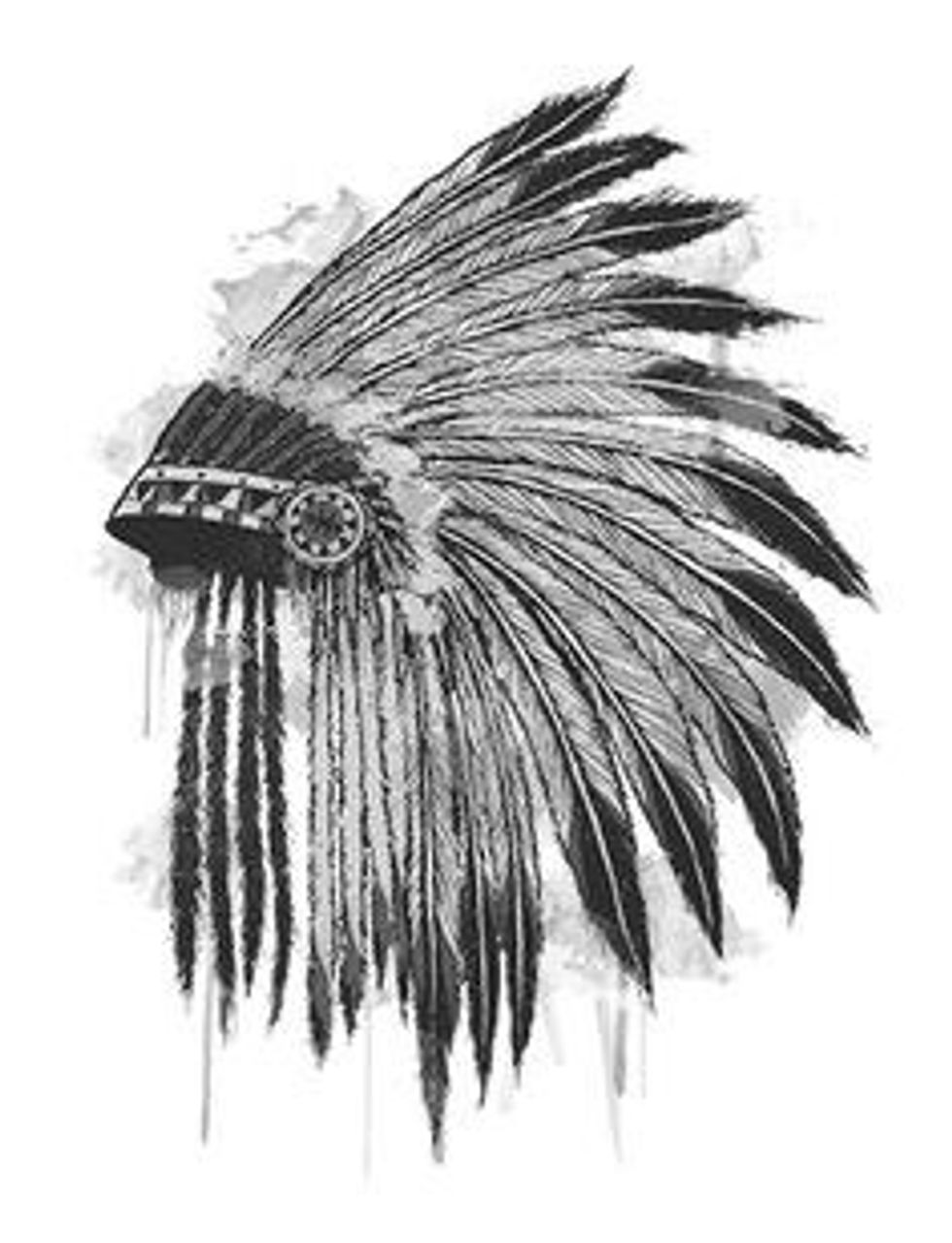
Even great men might only be given two or three in their whole lives. Receiving a feather was a mark of great respect. Those who wore headdresses were often spiritual or political leaders within a tribe. Many bonnets were made from eagle feathers, especially in the Plains region, as the eagle was seen as the most powerful of all birds.
As the eagle has become a protected species, the Eagle Feather Law was put in place to allow members of federally recognized tribes to continue to collect feathers from this bird, notably the only exception to the Migratory Bird Treaty Act of 1918. Many natives see the casual wearing of headdresses as highly offensive, as it it not meant to be a fashion statement, but is a sacred piece of tradition.
2. Animal Significance
Many native Americans believed all the creatures of the land and sky had a meaning. Some were even considered sacred. Understanding the beliefs behind the animals can be a useful tool in understanding why the presentation of an eagle feather was respectful and why the killing of the bison was a travesty.
The bear was seen by many peoples as a symbol of power and healing. He is instinctive but also exercises willpower. He is a watcher and a guardian of the earth. He also represents courage, strength, self-preservation and introspection.
The bison symbolized many things but, above all, was sacredness. He represented life itself, great strength, abundance and gratitude. The white bison was the most rare and sacred of them all.
The eagle was believed to be a divine spirit, giving native American people a connection to their creator. He also symbolized intelligence, sacrifice, courage and even freedom (which had a lot to do with the eagle becoming our national bird).
There was also the wolf, often interpreted as a symbol of wisdom, which meant a lot to many native tribes. Along with wisdom, he also represented loyalty, perseverance, success, intuition and spirit.
3. Dream Catchers
Dream catchers, or dream snares, were created by the Ojibwe people and passed to different tribes through trading and marriage. They are meant to resemble a spider web, woven to catch and remove bad dreams. There is meaning to every part of the dream catcher, the hoop (or tear drop-shaped hoop) symbolized the sun and moon travel across the sky with time. Feathers were usually added, traditionally hanging at the bottom to let the good dreams slide down them to the dreamers below.
Many native Americans have complained, and rightfully so, about the commercialization and misappropriation of dream catchers since the 1960s and 1970s. It is important to understand how sacred these items are in order to fully understand how we are appropriating native American culture.
The last important piece missing from classroom discussions on native American culture is where tribes are today. So many poorly educated people have no idea that reservations or even native Americans still exist. This would be remedied by talking about what has happened to the native people of this country in the last two centuries.
Native Americans Today:
There are 566 federally recognized tribes in the United States today, each with a unique culture and history. There are approximately 5.2 million natives left, only a small percentage of the population; 22% of these natives live on government reservations. The Navajo, Crow, Cheyenne, Apache, Hopi, Flathead, Jicarilla and Ute peoples still live on some of the larger native American reservations today. They are all within the 50 largest reservations, the Navajo being the largest in the country with 300,500 people in 27,096.30 square miles of land.
How would we teach native American culture and heritage?
This question has a very simple answer when you think about it: just do it. The biggest hurdle is getting everyone on board with the idea of integrating native American culture and history in U.S history, as so many people have misunderstandings about the natives of this land. Many people don't see how important it actually is to teach our youth about the indigenous peoples of the country we live in. Some states have begun mandating native American education be included in the curriculum, but we need action at a national level.
Once this is done, there's the issue of implementing the information into schools. Even if the government were to require teaching native American history in U.S. history classrooms, there's no one to say exactly how it should tactfully be done. Not even implementing it into common core would solve the problem, despite some people's misunderstandings of how common core works.
Educators must be taught how to teach the heritage and culture of the native peoples with respect, and to explain to students why it's important to learn more about them. For those history teachers who have already graduated, seminars could be set up at district or state wide levels to fill the void. Any good teacher should see the value of learning throughout the entirety of life; education doesn't end when you get your degree. There are constantly new trends and practices in education, and this is important enough to be implemented into our history classrooms.
This still leaves the last question, however... Why?
Why we should teach native American history
First, there is an important belief that claims that "we should know where we've come from to know where we're going." In history, we stress the importance of learning about the past to understand why society is the way it is today and to prevent the same mistakes from being made. We study American history and even world history, but we very rarely learn about the indigenous people of the Americas.
As a society, we are fascinated with ancient Greece and Egypt, even studying it extensively in school, and yet we find that collectively we know very little about the people who really founded this land we call America — home. In order to understand why western civilization is the way it is, we have to look at all of western civilization, not just the white-washed version of it, starting when Christopher Columbus came ashore.
It is also important in understanding the mistakes our country has made in the past, now more than ever with the irrational fear of immigrants and minorities present in this country. Recently, there has been a huge collective fear of Muslim terrorists entering America as refugees. Articles and images began circulating the internet, questioning who the real refugees of this country are, citing the Puritans and Quakers who traveled to the new world to escape religious persecution in their home countries. We must look at America objectively and accept the fact that we were not here first, and this was never our land to push the "Indians" off of.
Secondly, as I briefly discussed, there has been a dramatic rise in appropriation of native American culture in recent decades that is both misinformed and offensive. The most recent outcry was about the high number of headdress-wearing "hipsters" at this year's Coachella festival. Appropriation of any culture is offensive and irresponsible, though many are still confused as to the difference between appropriation of a culture and appreciation or homage to an earlier art form.
Remixing, reviving and sharing things from the past is one thing, but taking a culture's sacred items and flaunting them is disrespectful. Suddenly, society sees the difference when someone claims to be Jesus or dons black-face — but it's not different, just viewed as such. Refuting something I recently read about wearing native headdresses. No, it is not a compliment to take something so sacred and wear it to be fashionable, and we have no right to tell people whether they should or should not be offended. Young Americans need to be taught about the implications appropriation has and understand how they would feel if they were put in the same position as we've forced many of America's natives to be in.
The conclusion is simple. As a collective unit, Americans know almost nothing about the history or culture of the people who came before us. Implementing native American history into our classrooms would be so easy, but we just don't do it. It's so important to learn about these things to avoid offending historic cultures and making the same mistakes we made hundreds of years ago.

